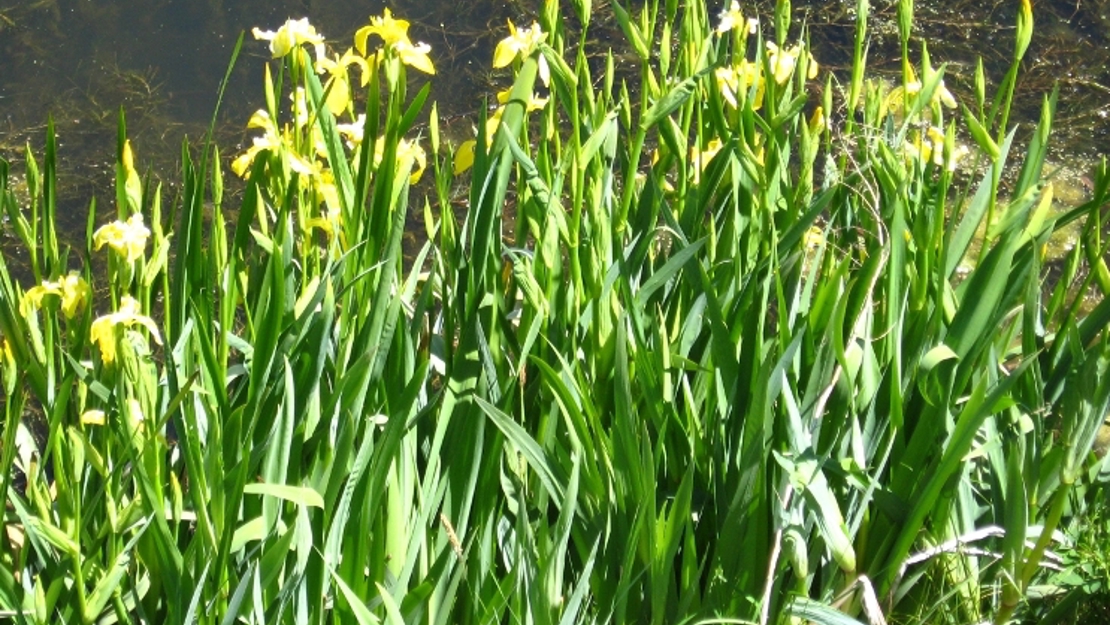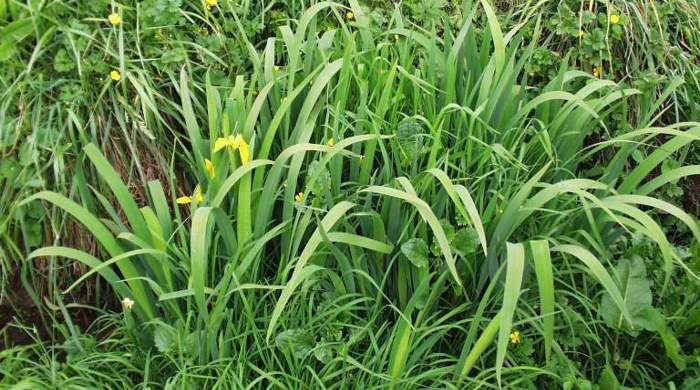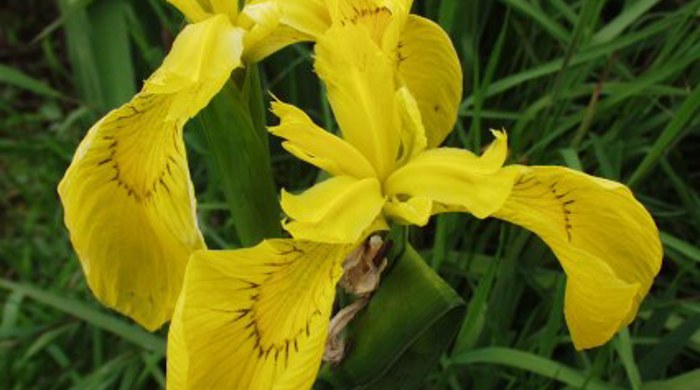Iris pseudacorus
Yellow flag iris
Family: Iridaceae
Origin: Eurasia, North Africa

Regional Pest Management Plan (RPMP) status
- National Pest Plant Accord Species
- Whole region — Sustained control
General description
Perennial rhizomatous herb < 1.5 m tall. Leaves are sword-shaped and arise in fan-like arrangement from base of plant. Flowers are yellow, < 12 cm in diameter and borne on erect stalks in September – December. Seed capsules are green and contain dark brown disk-shaped seeds.
What you need to know
To help protect our environment:
- You must not breed, distribute, release or sell yellow flag iris. As yellow flag iris is a National Pest Plant Accord species, these restrictions apply within the Auckland region and across the whole of New Zealand.
- You must not plant yellow flag iris within the Auckland region, unless you are transferring an existing plant on your land to another location within the boundaries of the same property.
- You must destroy any yellow flag iris on land that you occupy if it has been planted in breach of the above rules and you are directed to do so by an authorised person.
Habitats
Wetlands, damp ground, pasture, shallow margins of still and slow-moving water bodies.
Dispersal
Seeds dispersed by wind and water. Vegetative spread from rhizomes, dispersed by water. Human-mediated dispersal through contamination of machinery and deliberate plantings.
Impact on environment
Forms dense mats, displacing vegetation. Accumulates sediment, altering stream flow and morphology. Impedes pasture drainage and is poisonous to livestock.
Control
Site Management
Follow up treated areas 3 times per year.
Recommended approaches
Physical control
Method: Dig out.
Plant parts requiring disposal: Seeds and rhizomes.
Disposal options: Remove to greenwaste or landfill if practical.
Biocontrol
Biocontrol is currently not available for this species.
Community agrichemical control recommendations
Certified Handler/Experienced agrichemical user: For terrestrial infestations:foliar spray spring to autumn 100ml glyphosate green per 10L of water and 20ml penetrant.
For aquatic infestations: foliar spray spring to autumn 100ml glyphosate green per 10L of water
Caution: When using any herbicide or pesticide please read the label thoroughly to ensure that all instructions and safety requirements are followed.





